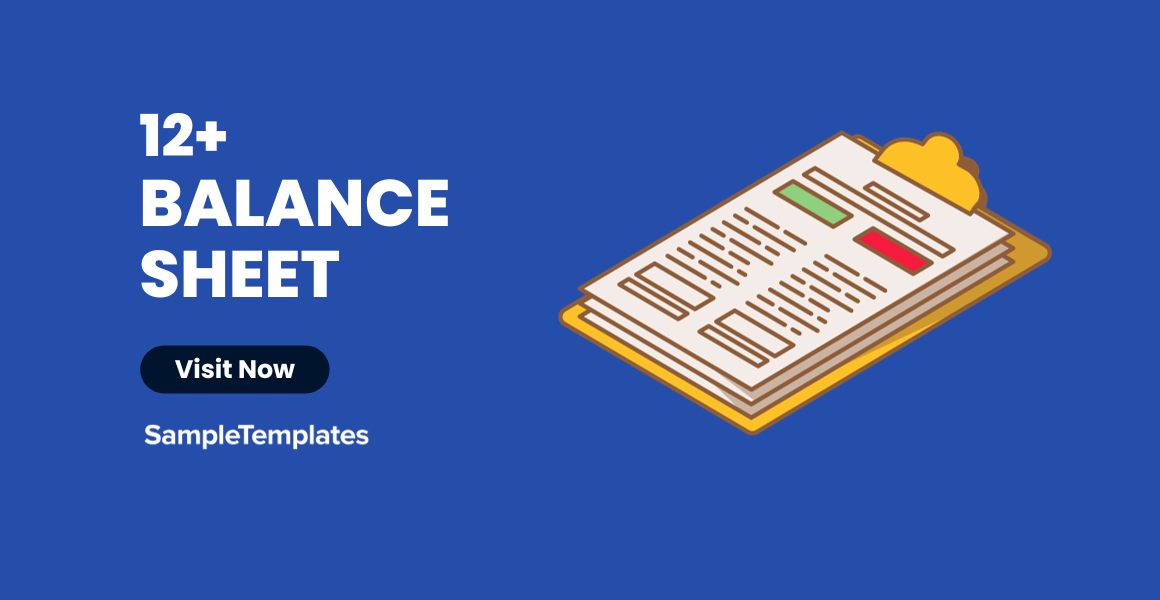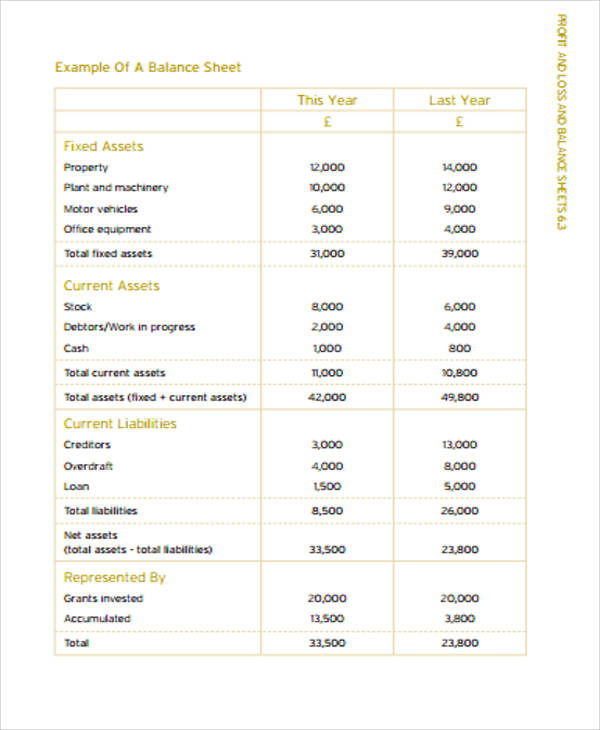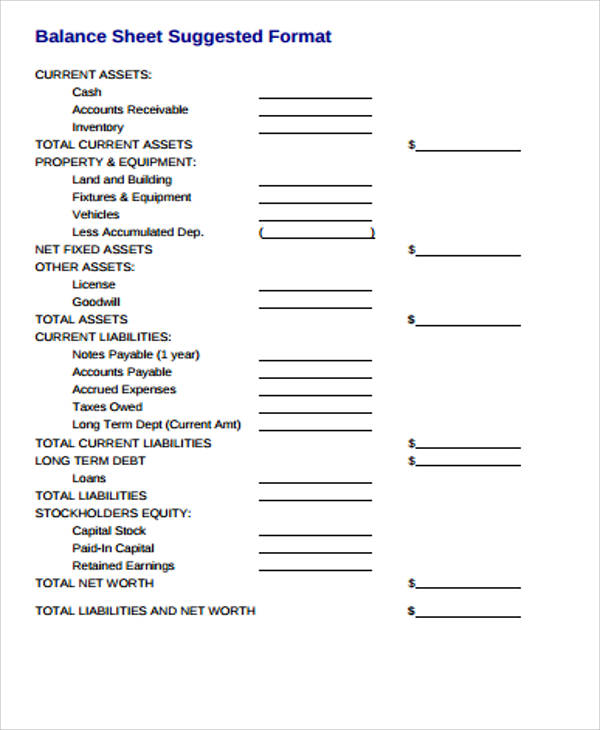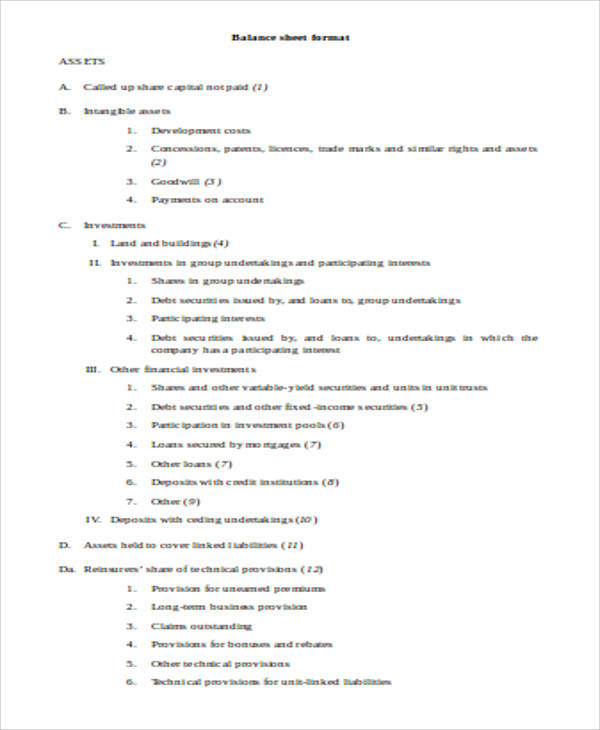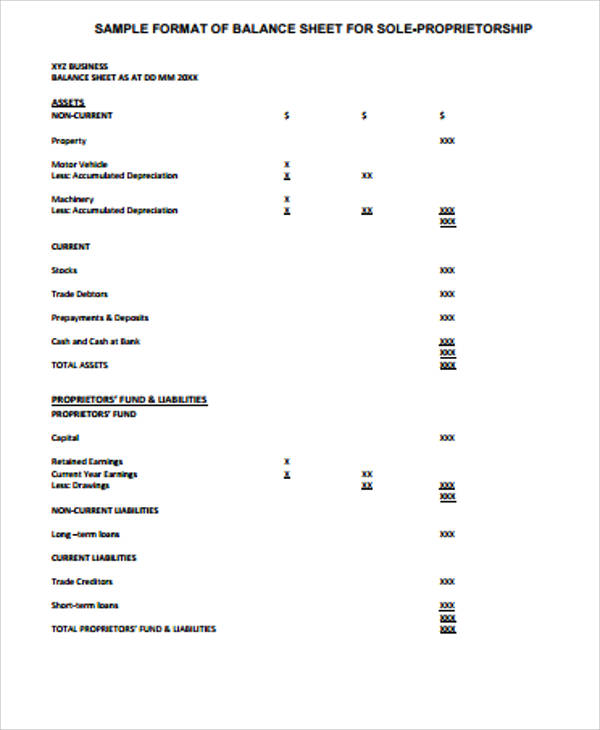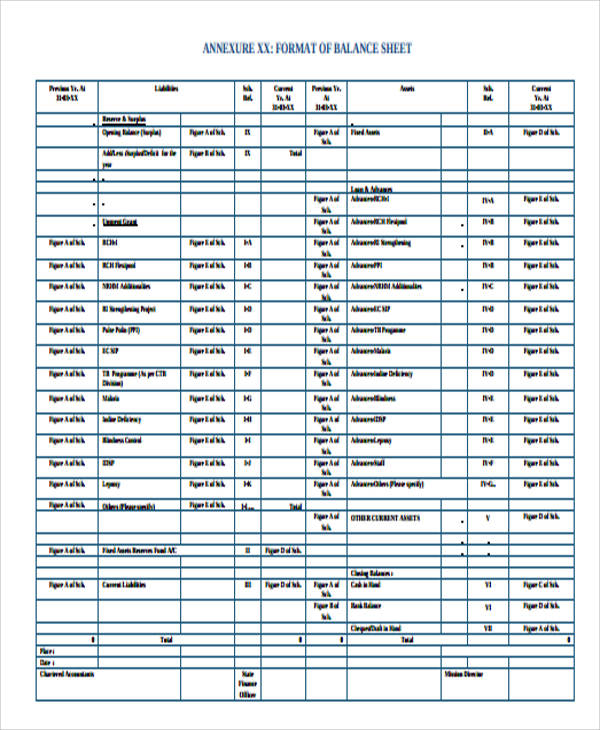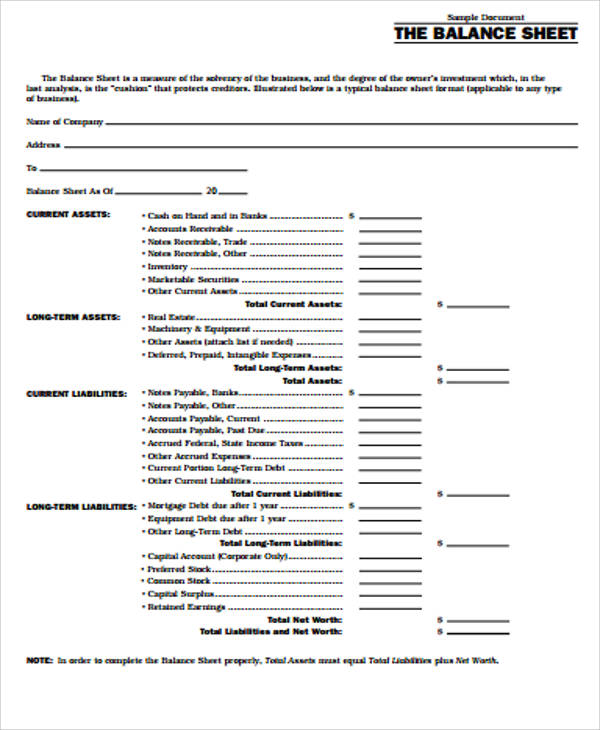Businesses need to make financial statements in order to see where they stand when it comes to their finances. One of the major financial statements utilized by companies and organizations is the balance sheet. A balance sheet records the money that comes in and out of the company. These are highly important when the company or organization needs to file their financial reports with the government in order to make a report of their statement of financial position.
In this article, we show you six balance sheet formats that you can use to make your own balance sheet. Whether you are a student, a startup company, or a certified accountant, you can definitely benefit from using our Sample Sheets. Check out all of the samples below.
Balance Sheet Template

Simple Balance Sheet Template
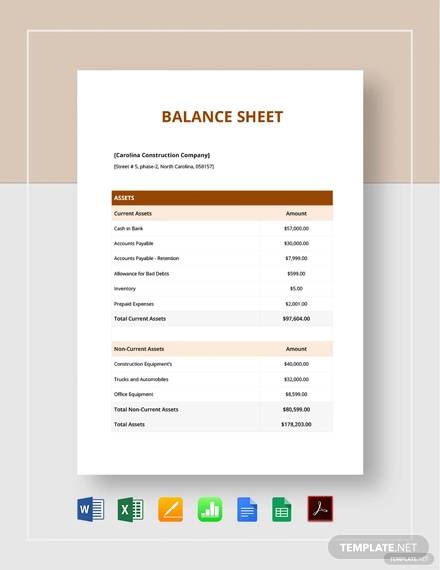
Monthly Balance Sheet Template
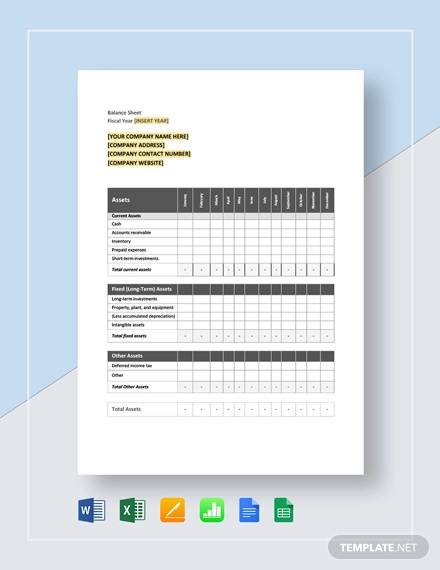
Quarterly Balance Sheet Template
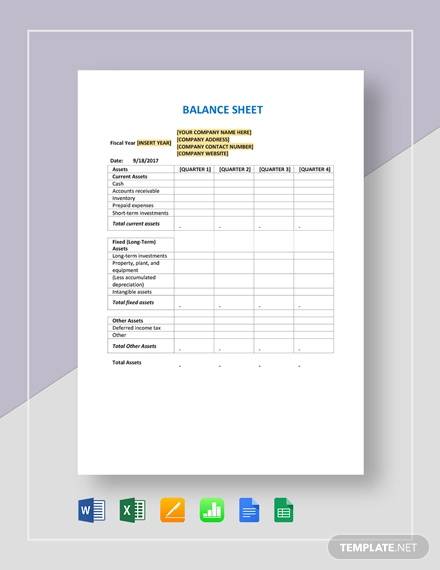
Proforma Balance Sheet Template
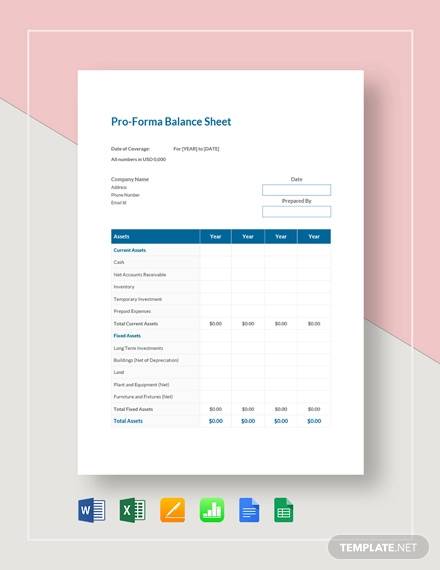
Accounting Balance Sheet Template

Profit and Loss Balance Sheet in PDF
New Balance Sheet Format
Balance Sheet Format Example
Sample Balance Sheet Format
Balance Sheet Format
A balance sheet is composed of three major categories. These categories are the following:
Assets
Assets are the items or things that are considered to be the company’s property. They are resources that a company has acquired through transactions or exchanges and have a value that can be expressed through monetary means. Some of the assets that a company might report are
- cash such as petty cash and cash on hand,
- investments,
- accounts receivables,
- land,
- buildings, and
- equipment.
Liabilities
Liabilities are considered to be what the company owes creditors for any transactions made in the past. They also include amounts that were received for future services to be rendered.
Liabilities can be further classified into two categories:
- Current liabilities or amounts that are to be paid to creditors with one calendar year of the balance sheet
- Long-term liabilities or obligations that need not be paid within one calendar year of the balance sheet
Liabilities reported by companies or organizations may include
- payables (notes, accounts, salaries, wages, interest, or other expenses considered to be a payable);
- expenses (see Sample Expense Sheets);
- customer deposits (amounts received for future services); and
- unearned revenues.
Equity
Just like liabilities, equity can be a source of the company’s assets. It is also the difference between the company’s assets minus the liabilities (Equity = Assets – Liabilities). Equity can be called owner’s equity if the company is considered to be a sole proprietorship. If it is a corporation, it will be called stockholder’s equity.
Balance Sheet Sample Format
Simple Balance Sheet Format
Printable Balance Sheet in PDF
Purpose of Balance Sheets
Balance sheets will give you an idea about where the company stands with regards to its finances. It gives users an idea of the financial condition of the company’s financial strengths and capabilities as well as the company’s debts. This document is what a company or organization will show banks, investors, and vendors should they want to be granted a credit loan.
Making Use of Balance Sheet Formats
Balance sheets can be used by companies and organizations in various situations. It can be very tedious and time-consuming to make though, which is why using the balance sheet templates can come in handy, especially when it’s crunch time for filing for financial statements. Some of the reasons why using the templates available are the following:
- Making use of the sheets in this article can help you save a lot of time since you can follow or edit the layout presented by the template.
- These balance sheet templates ensure that you will not miss any important detail, especially since balance sheets are critical documents that need to be filed carefully.
- These balance sheets are available in file formats that are compact—PDF and Word Document. They are also very easy to edit and follow when you are making your own balance sheets.
- When it comes to downloading the sample sheets, you will not be redirected to another website and you can download all of the samples free of charge.
You may also want to refer to Personal Budget Spreadsheets.
Related Posts
FREE 5+ Construction Bid Sheet Samples in PDF | MS Word | Excel
FREE 15+ Construction Timesheet Samples in PDF | MS Word
FREE 26+ Construction Sheet Samples in MS Word | Google Docs | Excel
FREE 20+ Continuation Sheet Samples in PDF | MS Word
FREE 25+ Program Sheet Samples in MS Word | Google Docs | Pages | PDF
FREE 33+ Student Sheet Samples in PDF | MS Word
FREE 32+ Planning Sheet Samples in PDF | MS Word
FREE 10+ OC Sheet Samples in PDF
FREE 10+ Beat Sheet Samples in PDF
FREE 3+ Paper Sign Up Sheet Samples in PDF
FREE 50+ Summary Sheet Samples in MS Word | Google Docs | Google Sheets | Excel | PDF
FREE 10+ Cleaning Bid Sheet Samples [ Commercial, House, Residential ]
FREE 10+ Group Sheet Samples in PDF
FREE 10+ Family Group Sheet Samples in PDF
FREE 5+ Printable Blank Signing in Sheet Samples in PDF
